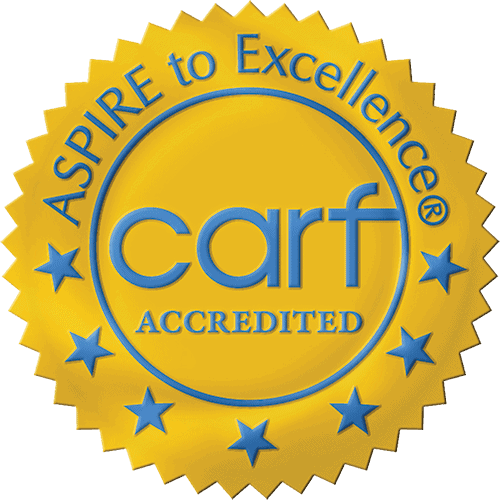Inhalant Addiction Rehabilitation in San Diego
Inhalants are substances that users inhale to induce a psychoactive effect. They include solvents, aerosols, and volatile organic compounds (VOCs). Although not all inhalants are addictive, these substances can be dangerous if abused. Inhalant abuse is fairly common among adolescents as they’re easy to access and use.
According to the National Center for Biotechnology Information, about 0.7 percent of adolescents between 14 and 19 years old have made attempts to use inhalants to get high. If you know someone who is addicted to inhalants or you suspect that your child is using them, it’s time to take action now.
Needless to say, inhalant abuse is a growing problem. Because there’s so much negative attention associated with drug addiction, people who have an inhalant addiction may be reluctant to seek help.
However, at Present Moments in San Diego, we can help. If you or someone you love is struggling with inhalant abuse, we can offer the intervention needed to end the problem permanently.
What are the most common inhalants and what are their side effects?
Inhalant substances include solvents, aerosols, and volatile organic compounds (VOCs). Nitrous oxide may also be inhaled by dentists or dental hygienists.
- Solvents: Solvents, such as glues, paint thinners, and paint, are the most common types of inhalants. They can affect both the brain and the body. Solvents may cause feelings of euphoria and may lead to a lack of coordination, drowsiness, nausea, vomiting, and even death. They can also cause permanent damage to the central nervous system and the brain.
- Aerosols: Aerosols are substances sprayed under pressure, and include hair sprays or cleaning products. Aerosols are highly toxic and are especially dangerous to children. For example, diethyl ether, a common solvent and propellant found in many aerosols, is poisonous to humans.
- VOCs (Volatile Organic Compounds): VOCs are colorless, odorless gases commonly found in paint and cleaning products. Some VOCs can cause cancer and other diseases.
- Nitrous Oxide: Inhalant abuse may also include the inhalation of nitrous oxide - often common among dentists and dental hygienists. Abuse of this substance may lead to neuropsychiatric changes, such as changes in personality, emotional disorders (including mania or depression), aggressiveness, impulsiveness, delusions, or hallucinations.
How Inhalants are “Inhaled”
Anyone who abuses inhalants may sniff or snort them directly, or soak them in bags and inhale the fumes. Users of aerosols directly spray the inhalant into the mouth or nose. Inhalants may also be added to a balloon before inhalation.
The Dangers of Inhalant Abuse
Inhalant abuse can have serious consequences — both immediate and long-term. Some of these consequences include the following:
- Immediate Negative Effects to Health from Inhalants: Short-term side effects from inhalant use include nausea, vomiting, loss of consciousness, and even death. People who sniff glue often develop a rash.
- Long-term Health Effects from Inhalants: Long-term health effects include liver damage, kidney failure, an increased risk of cancer, brain damage, permanent psychological disorders, and hearing loss.
- Social Consequences of Abusing Inhalants: Inhalant abuse may lead to dropping out of school, financial problems, and losing friends.
- Legal Consequences of Abusing Inhalants: People found guilty of inhalant abuse can be sentenced to jail time or be mandated to complete local treatment programs as part of their sentence.
How to Recognize Signs of Inhalant Abuse
If you suspect that your child or someone you know is abusing inhalants, there are some tell-tale signs to watch out for. These include:
- Repetitive Injuries: If you notice that your child or a close family member is consistently getting hurt, they might be abusing inhalants.
- An Unusual Odor: If you smell an unfamiliar odor, especially a sweet smell, coming from your child’s room or you smell it on a loved one, they might be abusing inhalants. Alternatively, if you notice that a loved one is covering their mouth, they might be trying to mask the smell of an inhalant.
- Lack of Sleep: If you or a loved one is struggling to fall asleep and stay asleep, it may be due to an inhalant problem.
- Changes in Physical Appearance: If you notice changes in someone's physical appearance — such as a sudden weight gain, change in skin tone, or sores on the face — it could be a sign of inhalant abuse.
- Uncharacteristic Behaviors: Is your child or a loved one acting differently? For example, are they withdrawing from family members or skipping school? If so, it could be a sign of inhalant abuse.
What You Should Do If You Think Someone is Abusing Inhalants
If you suspect that your child or someone you know is abusing inhalants, it’s important to talk to them about it as soon as possible. This can be difficult because you don’t want to shame them or make them feel guilty.
So, it’s important to be non-judgmental. Try to understand why you may be abusing inhalants and address those reasons calmly and supportively.
Before you address the situation, you may want to contact a professional counselor.
The Inhalant Treatment Process at Present Moments in San Diego
Symptoms associated with inhalant withdrawal may be physical or psychological in nature. While symptoms are normally mild, people who have a more severe abuse problem will experience more discomfort.
Inhalant Withdrawal Symptoms
Symptoms may include:
- Tremors of the hands
- Agitation or irritability
- Rapid heart palpitations
- Excessive sweating
- Nausea and/or vomiting
- Hallucinations
- Cravings
- Dizziness
- Runny nose or eyes
- Psychosis
- Angry outbursts
- Depression
The Withdrawal Period
Withdrawal symptoms usually emerge 24 to 48 hours after stopping inhalant use. The severity and duration of the withdrawal depends on the degree of the abuse. Also, factors, such as the product(s) used, the length of the abuse, frequency, and the user’s gender and body weight are considered. Usually, most people go through withdrawal for about a week.
The distressful after-effects of inhalant misuse are called post-acute withdrawal symptoms or PAWS. In severe cases, patients may experience these long-term effects for 18 to 24 months.
Conclusion
Inhalants are dangerous substances that can have severe consequences if abused. While not all inhalants are addictive, these substances can be dangerous if misused.
If you know someone who is addicted to inhalants or suspect that your child might be using them, it’s important to identify the problem as soon as possible. Maybe you have an inhalant issue yourself. If so, get help immediately.
Whether you, an adult loved one, teen, or child is abusing inhalants, you need to address the problem at hand. Contact Present Moments in San Diego to discover your options and overcome your addiction successfully.
Treatment for Inhalant Addiction at Present Moments in San Diego
If someone you know is in immediate danger from abusing inhalants, it’s important to get them enrolled in a treatment program right away. Don’t waste any time.
Contact Present Moments in San Diego to learn about getting the required treatment under way. While you might be tempted to deal with the situation yourself, it’s important to seek professional help to reduce the risks of dealing with the matter on your own.




